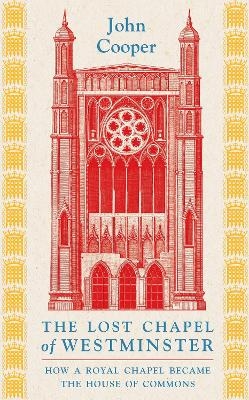
The Lost Chapel of Westminster
How a Royal Chapel Became the House of Commons
Seiten
2024
Apollo (Verlag)
978-1-80110-451-7 (ISBN)
Apollo (Verlag)
978-1-80110-451-7 (ISBN)
An illustrated history of St Stephen's Chapel in the Palace of Westminster, a building at the heart of British life for over 700 years.
The fascinating history of St Stephen's Chapel in the Palace of Westminster, a building at the heart of British life for over 700 years.
Begun in 1292, the royal chapel of St Stephen was the crowning glory of the old palace of Westminster – a place of worship for kings and a showcase of the finest architecture, ritual and music the Plantagenets could muster. But in 1548, as the Protestant Reformation reached its height, St Stephen's was given a new purpose as the House of Commons. Burned out in the great palace fire of 1834, the Commons chamber was then recreated on a remarkably similar medieval design, perpetuating a way of doing politics that is recognisable to this day.
St Stephen's has been part of many lives over the centuries, from the medieval masons who worked through the Black Death to complete the chapel, to the generations of MPs who locked horns in the Commons chamber. Threading together religion, politics, art, architecture and narrative history, John Cooper tells the story of the lost chapel, an iconic building that reflects the national transition from medieval divine-right monarchy to modern parliamentary democracy.
The fascinating history of St Stephen's Chapel in the Palace of Westminster, a building at the heart of British life for over 700 years.
Begun in 1292, the royal chapel of St Stephen was the crowning glory of the old palace of Westminster – a place of worship for kings and a showcase of the finest architecture, ritual and music the Plantagenets could muster. But in 1548, as the Protestant Reformation reached its height, St Stephen's was given a new purpose as the House of Commons. Burned out in the great palace fire of 1834, the Commons chamber was then recreated on a remarkably similar medieval design, perpetuating a way of doing politics that is recognisable to this day.
St Stephen's has been part of many lives over the centuries, from the medieval masons who worked through the Black Death to complete the chapel, to the generations of MPs who locked horns in the Commons chamber. Threading together religion, politics, art, architecture and narrative history, John Cooper tells the story of the lost chapel, an iconic building that reflects the national transition from medieval divine-right monarchy to modern parliamentary democracy.
John Cooper is an author and historian of the Tudor period. He studied at Merton College Oxford for his BA and doctorate, and is now Professor of History at the University of York. The author of Propaganda and the Tudor State and The Queen's Agent, John has worked as a historical consultant for the BBC and Starz, and is a popular public lecturer on the history, art and architecture of Tudor England. Most recently, he has led a series of projects investigating the Palace of Westminster, the lost chapel of St Stephen and the House of Commons. John is a Fellow of the Royal Historical Society and Director of the Society of Antiquaries of London.
| Erscheinungsdatum | 29.10.2024 |
|---|---|
| Zusatzinfo | 32 integrated b&w + map |
| Sprache | englisch |
| Maße | 135 x 216 mm |
| Themenwelt | Geschichte ► Allgemeine Geschichte ► Mittelalter |
| Geschichte ► Allgemeine Geschichte ► Neuzeit (bis 1918) | |
| ISBN-10 | 1-80110-451-4 / 1801104514 |
| ISBN-13 | 978-1-80110-451-7 / 9781801104517 |
| Zustand | Neuware |
| Informationen gemäß Produktsicherheitsverordnung (GPSR) | |
| Haben Sie eine Frage zum Produkt? |
Mehr entdecken
aus dem Bereich
aus dem Bereich
eine neue Geschichte des Mittelalters
Buch | Hardcover (2023)
C.H.Beck (Verlag)
CHF 53,20
Geschichte einer Augsburger Familie (1367-1650)
Buch | Softcover (2024)
Kohlhammer (Verlag)
CHF 47,60


